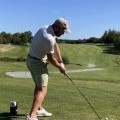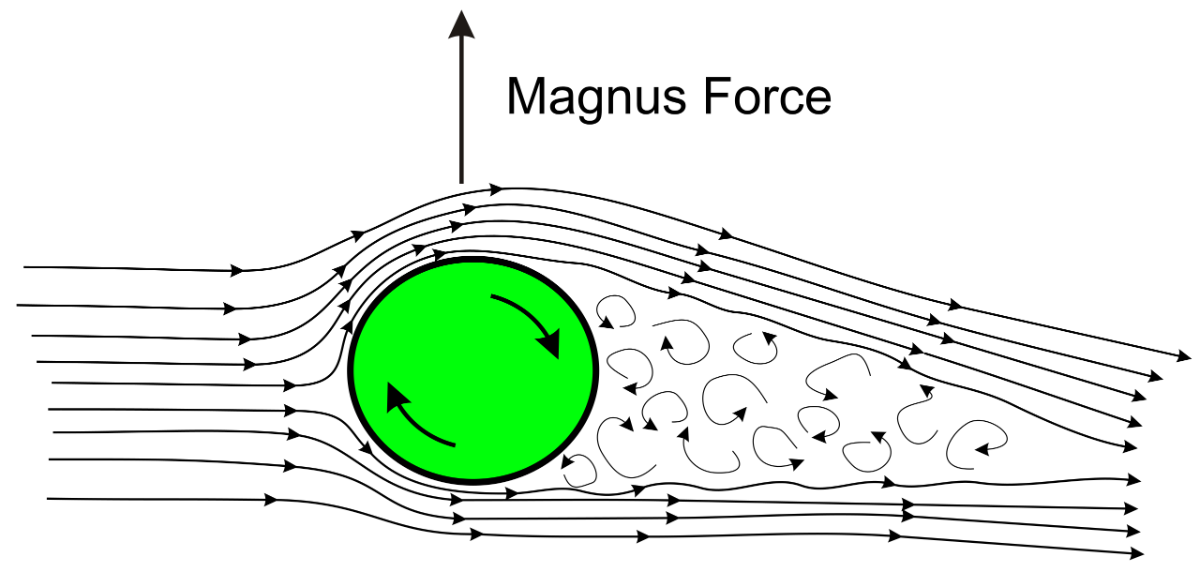-
Posts
13 -
Joined
-
Last visited
Profile Information
-
Gender
Male
-
Location
Valencia, Spain
Player Profile
-
Age
50-59
-
Swing Speed
91-100 mph
-
Handicap
11.3
-
Frequency of Play/Practice
Multiple times per week
-
Player Type
Casual
-
Biggest Strength
Short Game
-
Biggest Weakness
Approach
-
Fitted for Clubs
Yes
Recent Profile Visitors
SpanishHands's Achievements
-

Cannot reply to topic. "Browser seems a Spambot"
SpanishHands replied to SpanishHands's topic in Bugs and Site Issues
I did access the forum while travelling overseas. It probably looked suspicious now that I am back home. Thanks -

Cannot reply to topic. "Browser seems a Spambot"
SpanishHands replied to SpanishHands's topic in Bugs and Site Issues
After a few tries, now it allowed me to post. But still, puzzling behavior. -

Cannot reply to topic. "Browser seems a Spambot"
SpanishHands replied to SpanishHands's topic in Bugs and Site Issues
*** Forbidden. Private list deny. Browser seems to be spambot. *** In the past I have had trouble with replies being duplicated due to errors once posts were submitted. I am using Safari in OSX and also iOS -

Cannot reply to topic. "Browser seems a Spambot"
SpanishHands posted a topic in Bugs and Site Issues
I have been trying to reply to the Fit For Golf Testers Wanted topic, and my reply is rejected and the message says that my browser seems like a Spambot. I may appear like one, but I was not last time I checked xD -

2023 Titleist White Box Testing Thread
SpanishHands replied to GolfSpy_APH's topic in Forum Testing Reviews
I’m afraid I may be the last one to join the party. I am on a business trip all week and I hope that a FedEx package will be waiting for me when I get back on Friday. if that is the case Saturday morning I am taking them for a ride. -

2023 Titleist White Box Testing Thread
SpanishHands replied to GolfSpy_APH's topic in Forum Testing Reviews
@ZoonORama Can you take a close-up picture of the dimple profile using the cut balls? (simply try to get a close-up of the edge of the ball focusing on the cover, so the lateral shape of the dimples (TEST vs. ProV1) can be seen. My guess is that the dimples of test balls (and AVX) are somehow cylindrical in shape and the dimples in proV1 are more spherical. -

2023 Titleist White Box Testing Thread
SpanishHands replied to GolfSpy_APH's topic in Forum Testing Reviews
My hero -

2023 Titleist White Box Testing Thread
SpanishHands replied to GolfSpy_APH's topic in Forum Testing Reviews
Knowing I will not have the balls in my hands for a while, the engineer and fluid mechanics professor in me could not help but dig a little bit deeper in the impact that the dimple patter may have in our golf balls. Buckle up for a somehow dense and longish post. This may get a little technical, but feel free to ignore it if your head hurts. It may not improve your game. Maybe just satisfy some nerdy curiosity. I will try to make it educational. Please forgive the teacher in me if you already know all this. AERODYNAMICS, DIMPLES AND GOLF BALL PERFORMANCE Basics Dimples in a golf ball help the ball get more distance. They are an aerodynamic design improvement. A smooth golf ball will carry a significantly shorter distance to a dimpled golf ball. This was discovered experimentally with the first rubber balls (gutta perchas) and is now a key feature of any golf ball design. If you want to learn more about this (it is quite complicated) you need to search for boundary layer separation in spheres. To try to explain it in a few lines, any object moving through the air creates a low pressure wake behind it. This is why cyclists and cars can go faster if they follow closely another cyclist/car in front of them. This low pressure wake, creates a resistance (drag force) to advance and therefore reduces the total carry distance. The dimples, reduce the "boundary layer separation", and therefore the size of the wake, and the total resistance the golf ball experiences. This is a figure from my class notes that I hope helps you visusualize it (labels are in Spanish). I made the figure, that is why I am posting it. Drag, Lift and lateral forces However, the golf ball does not only experience drag. It also experiences a second force of a vertical nature, the lift force. All asymmetric objects moving through the air will usually experience both forces, lift and drag. The origin and nature of the forces is dictated by the geometry of the object. Positive lift is a vertical force that allows airplanes to fly and may create problems in very fast sport cars (that can be mitigated with the addition of wings). In the case of the golf ball, the origin of lift however lies in spin. The same way that a baseball, a football (soccer) or a tennis ball will present curve trajectories as they spin, so does the golf ball. The origin of this forces is physically explained by a principle called the Magnus Effect. (source: Rdurkacz - Wikipedia) This is behind a curve ball in baseball, a topspin shot in tennis or Messi bending a free kick shot. In golf, we know that spin numbers are very high. And therefore the forces are very relevant. Spin has two effects on golf balls: 1) Lift: Spin will create a vertical force on the ball. A golf ball always presents backspin or underspin (as anyone with a launch monitor will know). As a consequence, golf balls present a vertical upward force (lift) that is similar to the one experimented by planes. This is helpful as it increases carry compared to a ball with no lift. The greater the spin numbers, the greater the lift. Too much spin and the ball "balloons" and has a less penetrating trajectory. If the spin is too low, the trajectory will be too low. 2) Lateral force: The golf ball does not spin around a perfect horizontal axis. Although it can only spin around 1 axis, if this axis is not perfectly parallel to the ground, a second lateral force will appear. Depending on the direction of the rotation, the ball flight will be a draw or a fade. We know that the face to path angle determines this spin axis. Consequences: A higher spinning ball will fly higher and take greater lateral effects (draw or fade more) As we know, the secret of modern golf balls is to be able to reduce spin numbers with the driver (so the trajectory is optimal) while increasing spin with shorter irons for stopping power in the greens. Air temperature, humidity and density All aerodynamic forces (drag, lift and lateral forces) depend on 2 factors: - Relative air/ball velocity Relative velocity takes into account the wind velocity (if any) and the ball velocity. A ball leaving the club at 100 mph with a 30 mph head wind, has a 130 mph relative velocity. If the wind is a tail wind, then it is only 70 mph velocity. All forces are related to the square value of relative velocity. Therefore diferences in wind velocity will create even greater differences in effects and carry distances. It is very important to understand that lateral effects (draw, fade) are multiplied with velocity. Additionally, a lower spinning ball may help to keep the ball flying straight in windy days. - Air density Air density is the other key variable in ball flight. In this case, it is a linear influence (half the density, half the force). Lower air density will reduce drag and increase distance, but it will also reduce lateral forces and reduce workability (draw, fade). Air density is influenced by: Temperature, Humidity and Pressure (Altitude). Higher temperatures mean lower density. Warmer days will increase ball flight and reduce lateral effects Higher humidity means lower density. Humid days (contrary to the general opinion) will increase ball flight and reduce lateral effects. Higher pressure means higher density. Pressure depends on temperature, but is most noticeable in changes in altitude. Higher altitude means lower pressure, and lower density (increased ball flight and reduced lateral forces). Sea level will see greater density, and therefore shorter ball flight and increased lateral effects. Dimple pattern effect Of course, the number, size, depth, and distribution of dimples matters. Although I am not an expert in aerodynamics, the general rule of thumb is that the greater the surface coverage with dimples, the better. This usually leads to dimples of different sizes that allow for greater coverage. Fortunately, some scientists have published some conclusions. You can find the full article here: https://www.dl.begellhouse.com/journals/52b74bd3689ab10b,622ede1536cd09e2,1d6f10f3366ac391.html As discussed previously, an efficient dimple pattern will decrease forces (increase ball flight and reduce effects). The authors in the reference paper, discussed dimple depth: - Deeper dimples will increase forces Since the carry distance depends on the trajectory described by the ball, lower launch angles will benefit from increased lift. Therefore the authors concluded that the carry distance for small launch angles benefit from deeper dimples (high swing speeds) while greater launch angles benefit from shallower dimples. Golf ball selection based on local conditions Obviously golf ball selection depends on many factors and one should take the MyGolfSpy golf ball tests as a starting point for it provides unvaluable information on the characteristics of each ball. However, some local factors are often overlooked by amateur golfers when choosing a ball to play on a certain day: - Players may benefit from a lower spinning ball in windy days (reduced unwanted lateral effects, more control) - Players may benefit from a lower spinning ball in cold days (reduced unwanted lateral effects, more control) For players in full control of their effects, the amount of lateral distance travelled by the ball (draw or fade) will increase in windy and cold days. Cleaning and replacing the ball As mentioned before, the ball's surface is critical for its performance. Any change in those surface characteristics can have a significant effect in its flight. - Dirty ball: A dirty ball (mud) will have two consequences. Quite probably the efficiency of the dimple pattern will be reduced, and therefore the drag will be increased reducing carry distance. Additionally, an irregularity in the balls symmetry will increase the lateral forces (Magnus effect) and cause an irregular flight and potential greater dispersion in the line. - Scuffed ball: A scuffed ball will present once again irregularities on the surface and may increase drag and lateral forces. (I presume that a strong impact with a tree or wall may also have some changes in the mechanical characteristics of the ball, triggering its replacement) This was empirically demonstrated by this test by the MyGolfSpy Labs CONCLUSIONS 1) You do not need to understand all this 2) You may play fantastic golf without knowing all this 3) Some of this knowledge is relevant and may be useful in your golf game Disclaimer: A lot of this knowledge has been collated from several sources, and some of it has its foundations in my physics background. However, fluid mechanics and aerodynamics are very complex issues. I have not done any testing myself, and I am sure that ball manufacturers have a deep understanding and knowledge of this issue, and I could be wrong in some of my assumptions (especially about ball flight dynamics regarding optimal flight trajectory). However, I believe that most, if not all, of the contents presented here are correct. Many of them are factual. Please do not blame me for disasters in the golf course. Use at your own risk -

2023 Titleist White Box Testing Thread
SpanishHands replied to GolfSpy_APH's topic in Forum Testing Reviews
Thanks for this. I will relax for a while and aim at an end of November testing. Knowing I will not have the balls in my hands for a while, the engineer and fluid mechanics professor in me could not help but dig a little bit deeper in the impact that the dimple patter may have in our golf balls. Buckle up for a somehow dense and longish post. This may get a little technical, but feel free to ignore it if your head hurts. It will not improve your game. Maybe just satisfy some nerdy curiosity. I will try to make it educational. Please forgive the teacher in me if you already know all this. I will write it in a separate post for further clarity. -

2023 Titleist White Box Testing Thread
SpanishHands replied to GolfSpy_APH's topic in Forum Testing Reviews
I am sorry friends, but the wait is killing me. I am not in Africa as @Leonvdwesthuizen but I guess that shipments to Spain will also take some time. Fortunately, weather is not an issue and everything is ready, from weekend rounds lined up whenever the balls show up, to some indoow launch monitor testing to be done at home. In the meantime, I am open to suggestions on the appropriate testing procedure. I wil lay out the initial plans and happy to receive comments/suggestions 1) Set up the Mevo + and hit some irons at home (unfortunately, I cannot hit drivers in the garage). Use 4 balls: Test, ProV1x, AVX and Z-Star XV and 5 shots per iron (5i, 8i, 54ºwedge). Total 60 shots. Focus on distance/spin/trajectory 2) Take it to the putting green. Compare it to one of the other balls. Focus on feel 3) Practice chipping with all 4 balls and focus on feel, spin and feel 4) Take it out on the course and play 2 balls (side by side, same shots). The AVX yellow balls I have are from 2021, I believe (I found an incredible offer back then, and I do not loose many balls). Which ball should I do the side-by-side comparison? Apparently these are new AVX, so it could be interesting testing them with older AVX to see evolution. Or perhaps try the ProV1x and find differences. Suggestions? -

Anyone else not happy with custom fitted clubs
SpanishHands replied to Docdent's topic in Breaking News and Debate
I have had my share of fitting experiences. Most of them did not end happily. I have to say that I do not blame the fitters, but I do blame the process. In my case, I do not hit the ball the same way in a simulator as I do on the course. Tension creeps in, and I need easier clubs and conditions on the course than with a launch monitor. As a result, my swing speed goes down on the course, and I also need lighter and less stiff clubs. Even though the data suggested I could swing faster and hit further and straighter. But my body overswings when I hold a heavier, more "difficult" club, rendering the fitting process useless. To illustrate my point, I spent some serious cash on clubs (with some reputed fitters/clubmakers), and I was usually fitted for heavier and stiffer clubs than the ones that really optimize my performance on the course. A few times, I have found that I played much better and easier with off-the-shelf sets, than the expensive fitted/custom built sets that I just got. Since then, I have started building some of my own clubs, learning a lot about equipment and using my own launch monitor and trying to understand all the aspects from a scientific point of view (after all I am a professor in engineering). I have also been fitting some colleagues for clubs without monitor data (but with logic and great success) and also accompanying some seriously good golfers (+1 handicap) with swing speeds and numbers matching the PGA Tour averages to serious fitting sessions. These would be my takeaways 1) In my opinion mid handicap amateurs are not consistent enough with their ballstriking to guarantee the success of a fitting session. Wether it is because we perform differently on a mat or on the course, or because we have too many mishits to trust data sets of 10-20 strokes, I believe there is a significant chance for error in the average club fitting session for the amateur. 2) This should not be taken to mean that clubfitting is not the way to go or the best possible option. I believe we can all benefit a lot from the right set of clubs. However, the average fitting process does not guarantee a success in the selection. 3) If possible, trying the clubs on the course after a previous fitting session could be the ultimate factor to include in the decision-making process. Monitor data are great, but trial and error on the course is even better. 4) I find static fitting (length, lie, grip) and some dynamic variables (swingweight, loft) can be determined by hitting balls to a net with a launch monitor. However, I would strongly recommend to involve a teaching pro (if possible your teaching pro) to advice on some of these (lie has a significant impact on stance, ball flight, etc., and is not just a static variable. A chart may recommend to have a certain lie for the club, and dynamically you may need something different). I agree with the mantra that fitters should not try to change your swing or give you lessons, but at the same time a great fitter should have a very good understanding of the swing mechanics, your problems and how clubs may help you. Perhaps you may need to involve two people in the process. 5) I believe that at my level and even well below (anything short of people with exceptional swings, feel and results on a course) getting a "good enough" fitting is more than enough. The marginal improvement from a well fitted club to the optimum fitting club may not even be determined given how variable we are when we play. In other words, having a good or a bad day will have much more impact on the score than the difference between two similar shafts. We may never know, for certain, which of the two shafts is actually better for us. 6) In my experience (and for my level or worse) shaft weight and swingweight are far more important than flex. I am not saying that a player should not play a shaft matching their swingspeed and flight pattern. I am saying that 10 grams can make a world of a different and you may even go down one flex and notice it less, in feeling and performance. 7) I believe that most brands offer now enough OEM shaft options to avoid having custom shafts fitted. I do not thing the typical amateur needs to search outside the 5-10 options offered for each flex and this will usually mean a much affordable price. Having said that, I have nothing against custom shafts as long as the price is competitive (as I mentioned before I do not expect significant change in performance if the OEM shaft is properly chosen). 9) Your knowledge of the swing is a key factor. Which clubs do you find more comfortable, does your swing change depending on the club (e.g. with heavier steel shafts or graphite), do you like to take one more club and swing easier or give it all, do you need to shape the shots, do you hit many shots from under the trees... These knowledge NEEDS to be factored in when deciding. Regardless of the fitters opinion, you need to make decisions on facts, but this information is also part of the equation, not just numbers. And you need to apply all these also when selecting heads. 9) Finally, club heads are CRITICAL. Easy iron heads are a must for high handicappers, but I personally believe that an improving golfer with time and commitment to improve (with proper training and lessons) should try more demanding iron heads aiming towards player irons. An incremental evolution away from game-improvement irons will allow to learn how to shape shots, work on height, recover more effectively and improve ball striking (provided that there is work, effort and some wisdom placed in improving the swing). Regarding fairways, hybrids and driver I believe most people would benefit from easier heads (even for many very low handicaps) and lighter, softer and shorter shafts (in driver especially). Many of these are often heavily fitted based on distance, and I think most people would benefit from a dispersion fitting and even a mishits fitting (how about NOT removing the mishits with these clubs in those sessions). All of these thoughts are opinions, but heavily based on a lot of research and some experience. Personally, these days, I will not get fitted for clubs any more. I learnt all I needed to learn about my swing with the ones I have done so far. I know all my static variables and will look for shafts in a weight range that suits my swing and in a flex that makes sense for my swingspeed and ball flight. And I have never regretted so far a club selection with such process. Quite the opposite, I love my current clubs. And they are far cheaper than if I got fitted every time. -

International
SpanishHands replied to GolfSpy MPR's topic in Introduce Yourself/ WIYB (What's In Your Bag)
Greetings from Spain. I have been following reviews from Mygolfspy for quite a while and studied hard the different ball reports (fantastic stuff). Great to say hi. As for the questionnaire: How long have you been playing golf? What’s your handicap or normal score? I have been playing golf for 27 years now. I did not play much for almost a decade, but 10 years ago I started to take it seriously again. I have broken 80 this year a couple of times and I scoring consistently in the low 80s. My handicap is currently 12.8 with the quite demanding World Handicap System, especially in Spain where normally only tournament scores count. What do you love about golf? Everything. Another obsessed person with the sport. But I think it is great how difficult it is, and how we are able to do incredible things with the right dedication. What brings you to MyGolfSpy? Do you already know any other Spies? Sound information and the possibility to learn from other testers. I am an equipment geek and I love to learn new things. Where are you from? What is your home course? I live in Valencia Spain. Currently playing in Escorpion, but have been playing El Saler (great championship course) for many years. What are the best and worst things about golf in your region? Play 12 months a year, 10 of them in a magnificent weather. The other 2, also fantastic if you can stand some heat. The worse is there are less equipment options, especially if you are into clubmaking (which I am). What do you do for a living? I'm a hydraulic engineer working as a university professor. How’d you pick your user name? I thought it was fun to have a user name that would tell other users where I'm from... and the short game is definitely one of my strengths. WITB Srixon ZX5 - ZX7 combo - UST Recoil 760ES SW F3 Cleveland ZipCore wedges - 50-54-58 - UST Recoil 760ES SW F3 Ping G425 Driver - Mitsubishi Tensei AV Raw Orange 55 (1" shorter) Ping G425 Fairways (3-5) and Hybrid (4) - Alta CB 65 Slate TaylorMade Spider X Hydroblast - 8.5g weights










